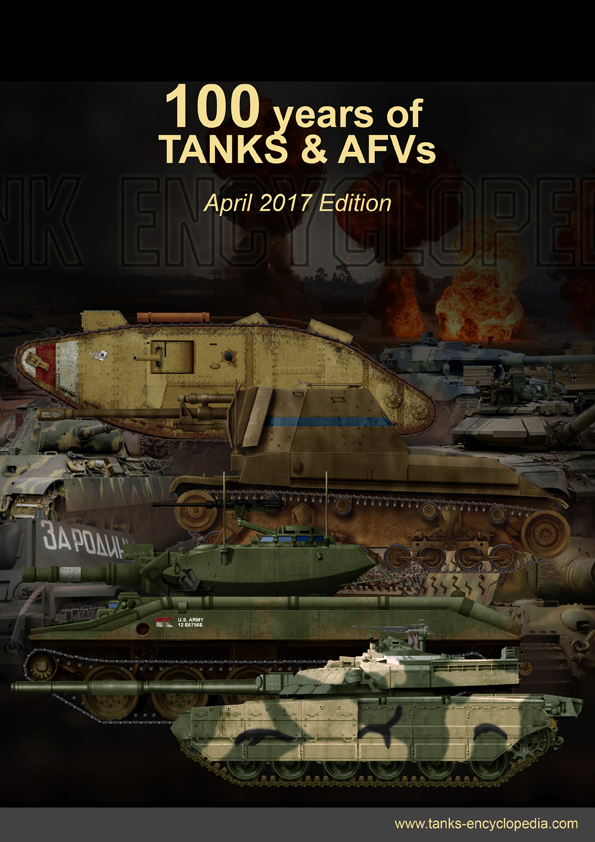Tank Encyclopedia's Archives
 A sub of Tank Encyclopedia. This is the new archive section, with all former entries, and a search engine.
A sub of Tank Encyclopedia. This is the new archive section, with all former entries, and a search engine. ➀ All single vehicles are accessible by nations and eras in a more consistent and logical way than previously. ADS are needed due to finance better server performances as audience grows. But you can support also it through merchandise here.
➁ New posts weekly. These are mere "entry into matter", for vehicles scheduled on tank-encyclopedia.com, that will be seen in the latter in much more detail. A link from the archive entry will point to the new article when up. There are still circa 2,000 serial armored vehicles to be treated over the years excluding prototypes and paper projects, so tank-afv.com will continue to run until all are treated, and follow the news of armoured vehicles around the world.
☄ About the site name: If a "Tank" is obvious to anyone in this context, "AFV" is an acronym which stands for "Armoured Fighting Vehicle". It is a catch-all definition for all military vehicles armoured (and armed), tracked or wheeled. For soft-skinned vehicles please visit truck-encyclopedia.com. See also The 2015 archive.
New Entries
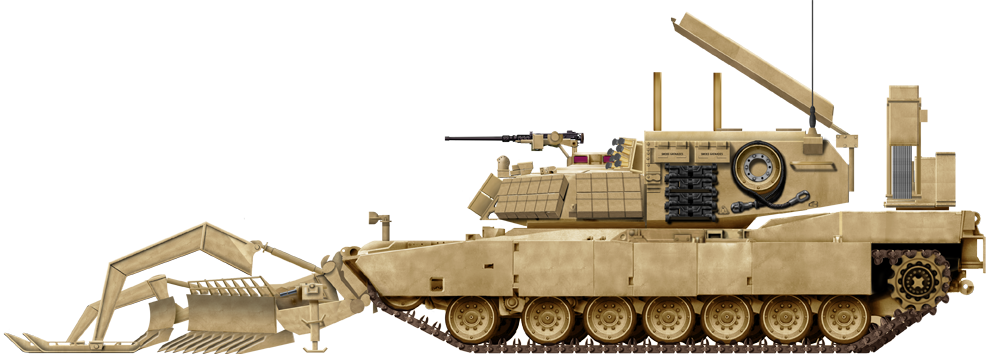
♆ 08/01/2026
 M1150 assault breacher vehicle (2008)
M1150 assault breacher vehicle (2008)
The M1150 Assault Breacher Vehicle (ABV) is a U.S. military mine and explosives clearing vehicle. It is based on the M1 Abrams chassis but transformed by the addition of a mine plow and line charges. The US Marines (USMC) was its primary user for the joint ISAF-Afghan Operation Moshtarak, Southern Afghanistan in 2010, cleaning up roads and tracks mined by the Talibans. The USMC retired the vehicle abbreviated "ABV" as of 2023 but it was exported to a number of countries.
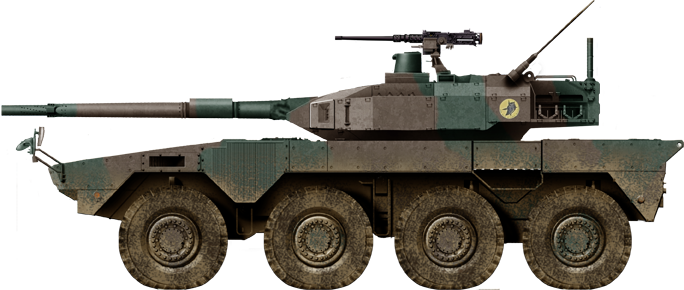
♆ 01/01/2026
 Type 16 MCV (2016)
Type 16 MCV (2016)
The Type 16 MCV (Hitoroku shiki kidō sentōsha) is a wheeled armored fighting vehicle of the Japan Ground Self-Defense Force (JGSDF). It was designed in the context of the new mobile combat units mostly intended wih asymetric threats developed after the cold war, notably in the US around the Stryker. Despite being light weight for fast airborne deployment and designed for rapid reaction on narrow roads and built-up areas to address last minute contingencies it had a powerful armament, choosing mobility and firepower over protection like the American M1128 MGS and Italian Centauro. The range and precision of its main gun enables to deal with main battle tanks if needed as part of an organic wheeled combat unit.
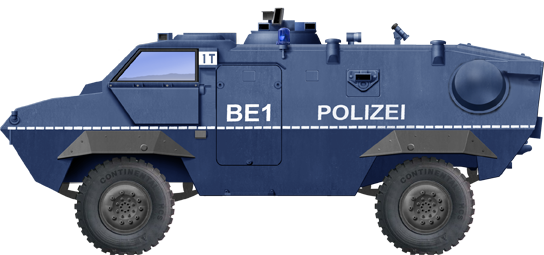
♆ 26/12/2025
 TM-170 (1979)
TM-170 (1979)
The TM-170 is a wheeled armoured personnel carrier announced in 1978 and produced a year after. It was originally designed as an APC for the military and internal security vehicle for polices, but proved adaptable for a wide range of roles. Thyssen Henschel developed it originally, before being integrated into Rheinmetall Landsystem. Today it is still maintained, parts are still built through Rheinmetall MAN Military Vehicles, Rheinmetall's Vehicle Systems Division, and it is still traded as the "Survivor R". It was tested but never used by the Bundeswehr but by the Bundesgrenzschutz, and instead widely exported, to Austria, Egypt, Iceland, Kuwait, Luxembourg, North Macedonia, and through Hanhwa Defence, Indonesia, Iraq, South Korea and through Shinjeong Development, Indonesia, Malaysia, South Korea, and Vietnam.
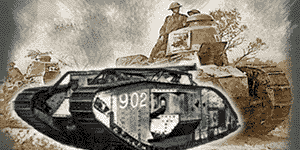
WW1 Tanks & Armored Cars
Born in the Trenches, when the front became static, the idea of the tank was a resurgence of ...science fiction, when some looked at HG Wells' "land battleships" novel. In UK, development was stirred by Wintson Churchill and the Navy. In France, by an artillery officer, J.B. Estienne. And soon the world took notice. Tanks were rare and few in between still, with grand plans in 1918 that never were realized. When the front was not static, armored cars reigned supreme.
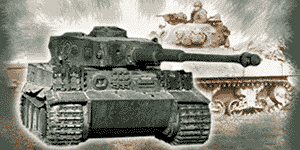
WW2 Tanks & Armored Cars
In 1939, thanks had nearly two decades to evolve at peacetime rate, though the boiling of new ideas of tactics and combined arms, with some armies more acute of these than any others. Ground combat proved absolute masters of these new ideas, the Wehrmacht, with luck and opposite incompetence. After moving to USSR, the fight moved to Africa, then to Italy and back to Western Europe at large, driving fast-paced innovation in a deadly food chain contest.
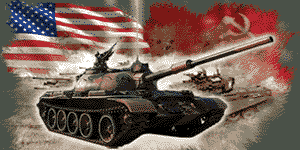
Cold War Armoured Fighting Vehicles
The atomic age started with the opposition of two superpowers, which developed deterrence but at the same time, always considered conventional warfare. Far from peaceful, this second half century, until 1991, saw gradual improvement, with a gap of twenty years before generations, towards 2nd, 3rd and 4th generation main battle tanks and a cohort of armoured personal carriers, infantry fighting vehicles, and many specialized variants, wheeled and tracked.
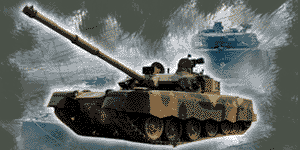
Modern Armoured Fighting Vehicles
As the recent conflict in Ukraine shows us, the tank is still useful in the frame of a conventional war. However drones unexpectedly showed deadlier as well as artillery. Between 1991 and 2026are we really seeing a radical transformation of ground warfare ? One thing is sure through for all generals: The main battle tank is still king of the battlefield, when well used and accompanied. From city scapes to desert, steppe, rolly hills and mountains, even coming from the sea, the tank adapted and is there to stay.
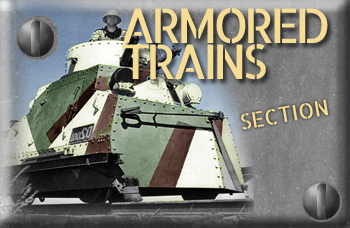
Armored Trains.
The New section in development
The same database as for tanks: Railroad networks developed in the XIXth soon found a military use. Before even WWI, train attacks led to armed and armored trains. This had going on for more than a century now. This will cover all WW1, WW2, but also cold war and even recent armoured trains on the long run.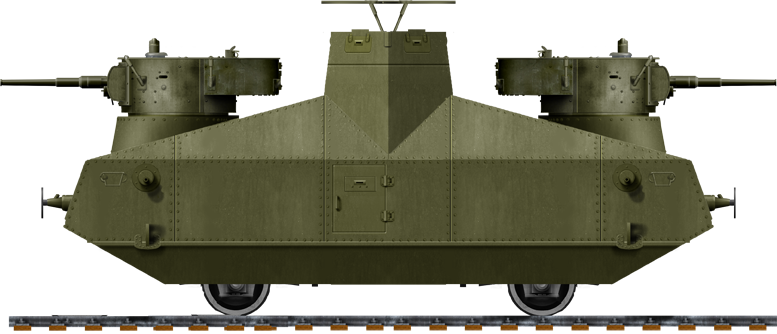
20/10.2025  D-3 Draisina (1934)
D-3 Draisina (1934)
The D-3 armored draisine was a self-propelled, armored railcar built by for Soviet in the interwar, up to the summer of 1941. The D-3 was developed from 1932 to fill the needs of the Red Army for a mass-produced, heavily armed patrol railcar. To make it affordable, as many of already existing and proven elements were used. The armament consisted in two T-26 tank model 1933 and its engine, coupled with the D-35 gearbox...
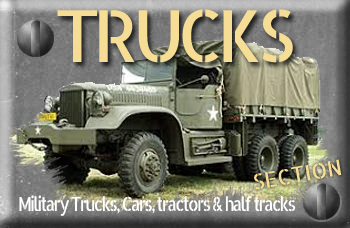
Trucks
Military Trucks and staff cars.
A dedicated section for softskin vehicles, from WWI to this day: Trucks, staff cars, reconnaissance vehicles, and artillery tractors: Truck-Encyclopedia.com.
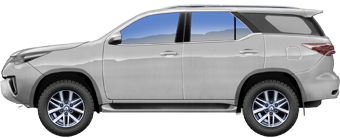
 Toyota Fortuner (2004)
Toyota Fortuner (2004)
04.01.2026 Toyota derived from the Hilux the Fortuner for the Asian Market. Also known as the Toyota SW4, this mid-size SUV manufactured since 2004 featured two/three rows of seats and selectioable rear-wheel/four-wheel drive configuration. Many were chosen by various police services in Asia and beyond, including the Indian Police in Kashmir when a few were lost in action.
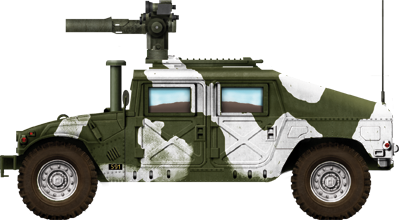
 Humvee (1984)
Humvee (1984)
28.12.2025 To close 2025 what else than one iconic vehicle that entered service roughly 40 years ago: The HMMVW or "Humvee", more officially the "High Mobility Multipurpose Wheeled Vehicle" initially designed to replace the aging Jeep in the American military and a whole range of utility vehicles that followed of the Korean and Vietnam war... This post concentrates on the softskin, not-armoured variants of the Humvee.
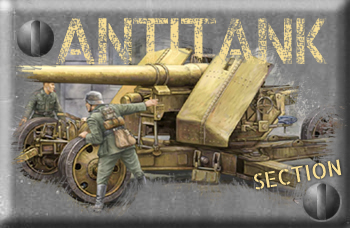
The Antitank-Encyclopedia.
All the means to destroy a Tank.
From early antitank cannons and rifles to missiles, mines and RPGs.
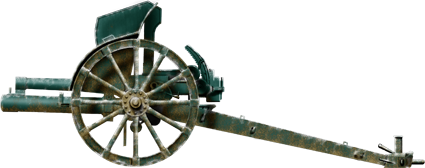
 Cannone da 75/27 modello 11
Cannone da 75/27 modello 11
➾ Field Gun produced 1911-18, 1341 manufactured.This field gun was designed in France in 1911 and produced in Italy by Vickers-Terni, Armstrong with a split trail (a first) and double recoil system (as well). Used both in WWI and WW2 it used a variety of anti-infantry shell but was never intended to do anti-tank jobs. Still, the Italians developed for it the Armor-piercing explosive shell (granata perforante esplodente) and later in the war, the EP (ready-action) or EPS (special ready-action) or EPS Mod. 42 (hollow-charge) shells (granate EP (effetto pronto) o EPS (effetto pronto speciale) o EPS Mod. 42 (a carica cava)) that were dedicated to anti-armour work, albeit provision was really dependent on the theater and mission. These hollow-charge shells were tested in 1942 during a mission in Germany on a captured German T-34 tanks, and barely made a scratch though. Still, they were used as such in combat at the Battle of Serafimovich Bend on 30-31 July 1942 by the II Gruppo, 120th Motorized Artillery Regiment. Used at less than 100m without primers they produced some results when not used frontally...
Upcoming:
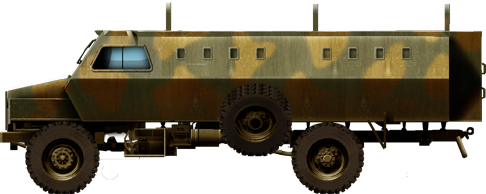
South Africa: Bosvark, MRAP Samil-50 Kwevoel RV, Ribbok, Hippo
Israel: Merkava, III, IV, M109A5 Doher/Rochev, Magach 5 Golan, M113 Golan/Zelda Toga (IDF service), MAR 290/90, M3 HT in IDF service, M50 AGM launcher, Haviv MLR, Eshel HaYarden, M2310 shilem
Britain: Vickers Mk.I MBT, Centurion AVRE, Light Mk.IV Colonial Pattern, Light Tank Mk.II, Wasp Carrier, Bren Carrier (update), FV430 Bulldog, FV105 Sultan, FV103 Spartan
USA: M548, M728 CRV, M40 155mm HMC, T12E1 CGMC, M15 Combination GMC, M13 MGMC, M12 155mm SPG, M14 MGMC, M17 MGMC, M39 Carrier, T1 Cunningham, M22 Locust, M3 HMC-75mm, M4 sherman flail, Marmon CTLS, Sherman-MkV-Crocodile, M108 SPG, LAV-300, M113 FIST, M106 MortarCarrier, M577 Command, M103, M110 howitzer
USSR/Russia: 9M317 BUK-M2, 9K330 Tor, 1S91-kvardat, 9K37M1 buk-M (SA-17-Grizzly), 2S35 Koalitsiya, BTT-1, MT-55, 9P157-2 Khrizantema-S, 9P163M-1-Kornet, 2S23 Nona SVK, BMO-T, BMP-2M, BMP-97 Vystrel, BTR-T, Ural Typhoon, R-381T-Taran, R-145BM, STZ-5 tractor/BM-13-16(Ni tank), Pioneer(Komomolets), T26T/BNSP reco vehicle/TP26, Ya12 tractor(T60/70), GT-MU soviet airborne APC, GAZ-2330 Tigr
China: Type 63G mod. light tank, VT4, Yitian-SPAAML, PLZ-07, PLZ-52, PGZ-07, PTL-02, Type 63C APC amphib Ukraine ready: BTR-60M Khorunzhy APC , BTR4 MV1
And also: LAV-6, M120 Rak, Archer, RODEF-4, Pereh-tank-destroyer, T34-D30-SPH, Iranian Rakhsh-APC, Patria II AMV, Light Tank Mark II, Mark III, Spanish AFVs interwar, TAB B33 Zimbru, Ford Lynx, Rhodesian Crocodile, Serge CDS, Jordan Khalid MBT, Jordan Al Hussein, Leonardo-M60 , wasserwerfer-SK2, BTR-152 vz53 SPAAG, MT-55, BTS-4A, BTS-2, Renault FT command, 370-Recoiless-GunsSPG, TC5000XYB
XMas Special !
Fill your basket, offer and delight your friends/family with brand new posters* of iconic tanks of WW2 to this day:
First of this new serie: All Tiger tanks liveries. See the free web version (10x smaller) and the Panther poster available here
More to come soon !
*Also available: Photo print, metal and canvas prints, postcards, mugs, bucket or dad hats, desk mat, baseball cap, t-shirts, tops, latptop or ipad/iphone skin, sleeves, cases, snap cases, but also acrylic blocks and wood mounted prints, taperstry, clocks, coasters, comforter, duvet, shower curtain, throw blanket, pillow, drawstring bag, tote or duffle bag, backpack, pin, scarf, socks, zipper pouch, hardcover journal and spiral notebook, apron and this Xmas 2023 novelty: A Jigsaw puzzle...
